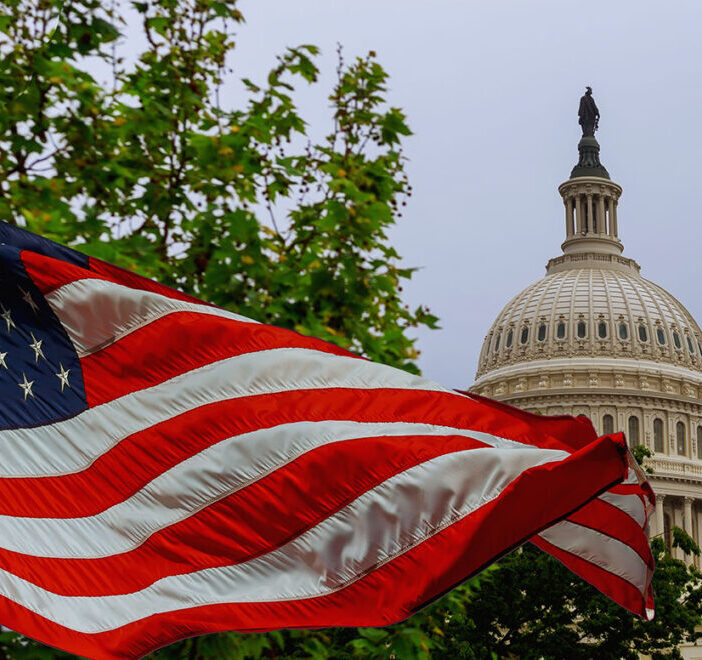Proposed Rule Brings Changes Big and Small to SNF VBP and QRP
Here are details of the proposed changes to these programs below:
Quality Reporting Program (QRP)
The SNF QRP is a pay for reporting program. Providers are at risk of a 2% Medicare FFS rate reduction for failure to adequately report data to calculate the measures in the program. This year, CMS proposes to add a new SNF QRP measure on flu vaccine rates for health care personnel in FY2025. This measure will be reported into the NHSN system like the COVID-19 vaccination Coverage for Healthcare Personnel measure. CMS notes that more than 17% of SNFs already report the flu vaccine information voluntarily.
In addition, CMS previously delayed the reporting of data on two transfer of health information measures and the Standardized Patient Assessment Data Elements (SPADEs) until 2 years after the Public Health Emergency (PHE). However, in this proposed rule, CMS now seeks to begin collecting this information on October 1, 2023. In addition, CMS is considering the following measures to be added in future years of the program: 1) Functional outcome measures for self-care and mobility items; and 2) COVID-19 Vaccination Coverage for Residents. The QRP will already be measuring COVID-19 Vaccination Coverage among Healthcare Personnel beginning in FY2023. CMS is also seeking input from stakeholders on the future inclusion of a patient/caregiver satisfaction measure called COREQ.
Value-Based Purchasing (VBP) Program
The SNF VBP program places 2% of a provider’s Medicare FFS rate at-risk to be earned back based upon their performance on a Skilled Nursing Facility Readmission Measure (SNFRM).
FY2023 VBP Rate Adjustments – 0.8% reduction
CMS, again, proposes to suppress the SNFRM for FY2023 due to the PHE having “significantly affected the measure and the ability to make fair, national comparisons of SNFs’ performance scores.” Similar to last year, CMS will assign all providers a “0” for their performance score resulting in an effective rate reduction for all SNFs of 0.8% off of the FY2023 Medicare FFS rate (Calculation:2% withhold for the incentive pool X 60% returned = 1.2% returned or 0.8% reduction). CMS data analysis showed a significant decline (32%) in the number of eligible SNF admissions that could be used to calculate the measure, as such it had concerns about the measure reliability and so decided to suppress the measure for FY2023. SNFs with fewer than 25 eligible stays will be excluded from the VBP altogether, maintaining 100% of their Medicare FFS rate. While by law these rate adjustments are applied only to SNF Medicare FFS rates, it should be noted that many nursing home contracts with Medicare Advantage (MA) plans reimburse nursing homes a percentage of FFS so in effect, this rate reduction, along with others such as the PDPM Parity Adjustment would also impact MA payments in those situations.
CMS will continue to provide SNFs with quarterly confidential feedback reports so they can continue to see their progress on the SNF readmission measure (SNFRM) and take appropriate actions to reduce readmissions. CMS will also publish the SNFRM rates for the public but with a notation that the rates have been suppressed given the effects of the PHE.
CMS intends to resume calculating SNFRM performance and adjusting payments accordingly in FY2024 citing its belief that much has changed since the early days of the pandemic including the percentage of nursing home staff and residents who are vaccinated. CMS plans to again use FY2019 data as the baseline for comparing to the performance period data for FY2024.
SNF VBP Getting a New Look with New Measures
The SNF VBP will go through the greatest transformation in the coming years. Under the Consolidated Appropriations Act of 2021, Congress authorized CMS to add up to an additional 9 measures to the SNF VBP.
FY2024 – Staff Turnover Measure Addition
In last year’s rule, CMS indicated its plans to add a nurse staffing turnover measure. It is proposing to add a staff turnover measure to VBP in FY2024. At present, it appears CMS intends to use the measure that it began publicly reporting on Care Compare in January 2022. It looks at the percent of total nurse staff that have left the facility over the last year including RNs, LPNs, and CNAs. However, CMS is seeking additional input on the measure and whether the measure should be revised before it is added to the SNF VBP in FY2024. It will use this feedback to inform its FY2024 rule proposals. CMS is also considering adding the NHSN reported COVID-19 Vaccination Coverage among Healthcare Personnel Measure to VBP in future rulemaking.
Two New Measures for FY2026 – Healthcare Acquired Infections and Total Nursing Hours
CMS proposes to add 3 new measures to the SNF VBP program, but they won’t impact rates until several years from now. Beginning in FY2026, SNF performance on a Skilled Nursing Facility Healthcare Associated Infections Requiring Hospitalization (SNF HAI) measure and a Total Nursing Hours per Resident Day measure would be factored into the FY2026 rates.
For SNF HAI, a SNF’s performance on the measure will be calculated by comparing a SNF’s claims data from FY2022 (baseline year) to FY2024 (performance year). If finalized, a SNF’s Medicare FFS rates will not be adjusted based upon this measure until FY2026. The SNF HAI is a claims-based measure using one year of Medicare FFS claims data that estimates the risk-standardized rate of HAIs acquired during SNF care that result in a hospitalization. Therefore, it will not require any additional data reporting from SNFs.
The Total Nursing Hours per Resident Day measure will be based upon Payroll Based Journal reporting and MDS resident assessments. It is the same measure as the one used in the Nursing Home Five-Star Quality Rating System. In order to align with other reporting, CMS will average the total nurse staffing per resident day across quarters to form a 1-year performance period. LeadingAge has advocated to CMS that they consider delaying the inclusion of this measure in the VBP at this time, given the staffing shortage that has been exacerbated by the pandemic. It appears that CMS heard our pleas and will not add this to SNFs’ performance scores under VBP until FY2026. At that time, CMS will compare baseline data from FY2022 to the SNF’s performance on the measure in FY2024. We still have concerns about the inclusion of this measure in the VBP program as we believe SNF members will continue to struggle to impact this measure based upon the staffing shortage. CMS is committed to moving ahead with the inclusion of this measure based upon numerous studies showing a correlation between staffing levels and good care outcomes for residents. It is also not clear if CMS will establish a minimum benchmark or how the performance score for this measure will be calculated.
New Measure for FY2027 – Discharge to Community
CMS will add another new measure to SNF VBP in FY2027, Discharge to Community – Post Acute Care Measure for Skilled Nursing Facilities (DTC PAC SNF) measure, which will use 2 years of Medicare FFS claims data. The first year will compare baseline data from FY 2021 and 2022 with performance data from FY 2024 and 2025. This measure is currently tracked as part of the SNF QRP and in other PAC QRP programs. By adding it to the VBP program, SNFs will now be rewarded/penalized for their performance on this measure along with the other VBP measures. CMS opted to delay its implementation in order to give providers time to prepare for its inclusion and put necessary operational processes in place to assist in successfully discharging SNF residents back to the community without an unplanned readmission or death within the 31 days following discharge from the SNF. “Community” is defined as “home or selfcare, with or without home health services.” SNFs will want to pay close attention to the Patient Discharge Status Code they use in order to ensure accuracy on this measure.
Baseline Year Data to be Used
Due to the COVID-19 PHE, CMS has opted to use FY2019 as a baseline year in its calculations as a way to avoid the effects of the COVID-19 pandemic on performance. CMS proposes to continue using this same baseline data for FY2025 calculations instead of FY2021 data. In making this recommendation, CMS cites issues of significant declines in SNF admissions and staffing shortages from COVID-19 impacting data in FY 2021 as reasons to continue this policy.
Low Volume SNFs
CMS will continue to exclude certain SNFs with a low number of residents or stays from the SNF VBP rate adjustments, but with a slightly modified policy. Under the proposed new policy, CMS establishes a similar 25 data point minimum (e.g., residents or eligible stays) to qualify. These case minimums will be applied to each measure and a provider must meet them for a minimum number of measures to receive a value-based incentive payment. For example, a provider would have to meet the case minimums for 2 of 3 measures in FY2026 in order to be eligible for a Value-Based Incentive Payment under SNF VBP. With this change, CMS also proposes to make corresponding changes to when measure information is reported publicly for SNFs that don’t meet the measure minimums.
New Scoring Methodology
In FY2026, the VBP program will assess SNF performance on the SNFRM and 2-3 additional measures. For this reason, CMS is updating its proposed scoring methodology for the program. Beginning in FY2026, for each measure, a SNF will be able to earn as many as 10 points on achievement or up to 9 points for improvement. Points for each measure will be determined by comparing a SNFs performance in the performance period to the benchmark (top decile of national SNF performance on a measure) and the achievement threshold (the 25th percentile of national SNF performance) during the baseline period. To receive 10 points on a measure (the maximum), a SNF’s performance during the performance period must be equal to or greater than the benchmark. Those performing under the achievement threshold will receive 0 points for achievement on that measure. Gradations of points will be assigned for SNFs falling between these two parameters. CMS will continue to look at a SNFs achievement and improvement scores and assign the higher of the two. Points for all measures will be summed up and translated into a 100-point scale.
At least for the initial year, all measures will be evenly weighted but as more measures are added CMS will evaluate whether to organize measures into domains and whether those domains should be weighted.
CMS is also seeking input on how best to validate future measures and considering changing how it calculates the Value-Based Incentive Payments based upon performance score.
LeadingAge will be working on comments on the elements of the FY2023 SNF PPS Proposed Rules including the sections on the SNF VBP and QRP programs and the numerous Requests for Information throughout the document. We will be developing a template for members to use in sending their own comments to CMS by the June 10 deadline.
In addition, we will review the proposed rules and solicit feedback from our Nursing Home, and our Quality & Risk Management network groups using this information to shape our comments.
Please also see the article on the payment provisions of the rule.

Most Recommended
October 15, 2025
 Shutdown Week Three: Impact of Ongoing Closure on Affordable Housing
Shutdown Week Three: Impact of Ongoing Closure on Affordable Housing
December 10, 2025
Fiscal Year (FY) Funding 2026
October 07, 2025
Immigrant Workforce Matching Program Brings Workforce Relief
Recently Added
December 11, 2025
 Analysis: CY2026 Home Health Final Rule
Analysis: CY2026 Home Health Final Rule
December 09, 2025
Collaborating Around the Globe to Teach and Learn
December 08, 2025



